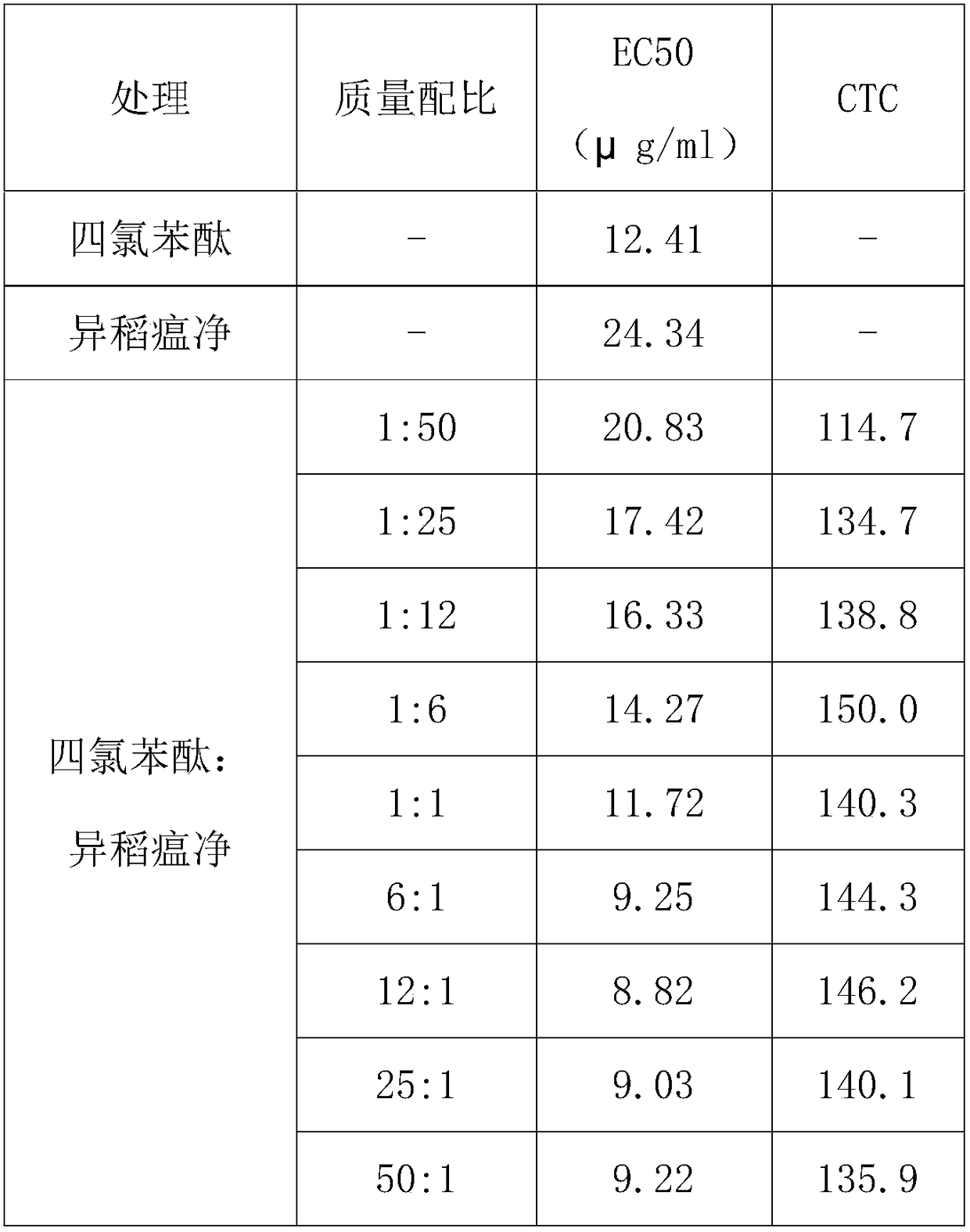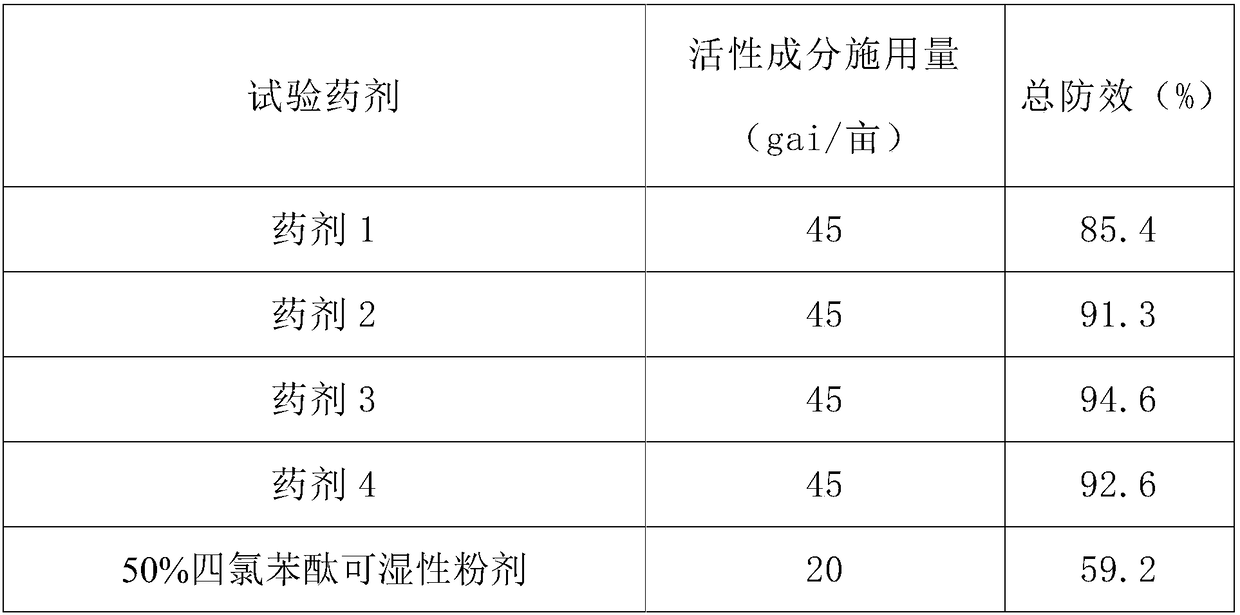Bactericidal composition containing rabcide and iprobenfos
A technology of isomidaojing and tetrachlorophthalide, which is applied in the field of pesticides, can solve the problems of increased drug application, environmental pollution, and short research and development cycle, and achieve the effects of reducing drug resistance of bacteria, reducing environmental pollution, and reducing application dosage
- Summary
- Abstract
- Description
- Claims
- Application Information
AI Technical Summary
Problems solved by technology
Method used
Image
Examples
Embodiment 1
[0025] Example 1: Indoor toxicity test of tetrachlorophthalide and isomyzae to Magnaporthe grisea.
[0026] Test method: potted plant method. The test refers to "Pesticide Indoor Bioassay Test Guidelines NY / T1156.8-2007". 8-10 seeds of rice were sown in each pot, and each concentration was repeated five times, and each treatment had a total of 5 pots of rice. At the three-leaf stage of rice, the chemical treatment was carried out, and the clean water treatment was used as a blank control. After 3 days of chemical treatment, wash the surface spores of the cultivated pathogenic bacteria with sterile water, add Tween 80 to make 1×106 spore concentration, and spray evenly on the rice leaves with a sprayer for inoculation. After inoculation, the rice seedlings were placed in a humidifying box, connected to a humidifier, shaded with a black cloth for 24 hours, and kept at 95% humidity. After 7 days of 12h / 12h light / dark cultivation, the test results were investigated. The grading...
Embodiment 2 4
[0041] Example 2 The field control effect of tetrachlorophthalide and different rice blast net compound on rice blast
[0042] Test method: refer to the method in GB / T 17980.19-2000 Pesticide Field Efficacy Test Guidelines (1) Fungicides Control Rice Leaf Diseases.
[0043] Test drug:
[0044] Medicament 1: 28% Tetrachlorophthalide · Isomazine Suspending Concentrate (tetrachlorophthalide: Isomazine = 1:6);
[0045] Medicament 2: 30% Tetrachlorophthalide·Isomazin EC (Tetrachlorophthalide: Isomazin=2:3);
[0046] Medicament 3: 49% Tetrachlorophthalide·Isomabizine wettable powder (tetrachlorophthalide: Isomablastine=6:1);
[0047] Medicament 3: 50% Tetrachlorophthalide·Isomidae Purifying Water Dispersible Granules (Tetrachlorophthalide: Isomydaojing=1:1);
[0048] Table 2 The field control effect of tetrachlorophthalide and isomycin compound on rice blast
[0049]
[0050]
[0051] It can be seen from the above table that, compared with a single dose, the compound appli...
PUM
 Login to View More
Login to View More Abstract
Description
Claims
Application Information
 Login to View More
Login to View More - R&D
- Intellectual Property
- Life Sciences
- Materials
- Tech Scout
- Unparalleled Data Quality
- Higher Quality Content
- 60% Fewer Hallucinations
Browse by: Latest US Patents, China's latest patents, Technical Efficacy Thesaurus, Application Domain, Technology Topic, Popular Technical Reports.
© 2025 PatSnap. All rights reserved.Legal|Privacy policy|Modern Slavery Act Transparency Statement|Sitemap|About US| Contact US: help@patsnap.com



